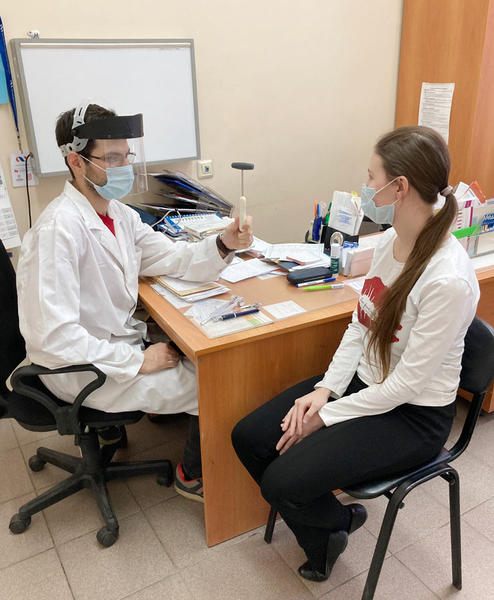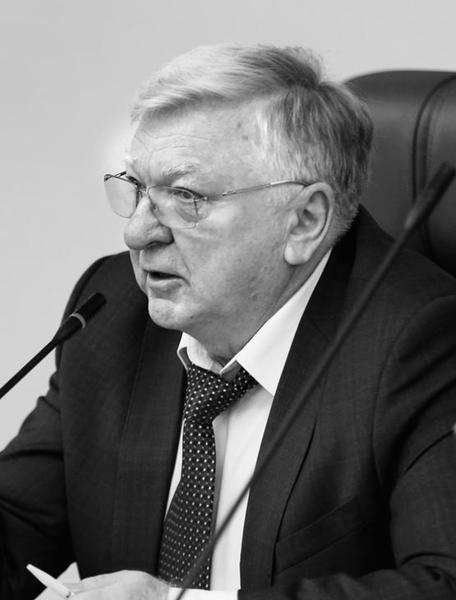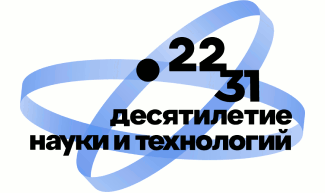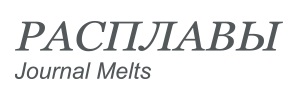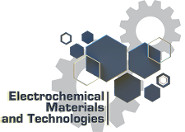For a long time the scientists knew that the polyclinic of the Ural Branch of the Russian Academy of Sciences was going through difficult times. Outdated equipment, lack of specialists, staff turnover – all this is a consequence of insufficient funding. The academic medical institution did not have a state assignment, since it did not conduct scientific activities, and received funds only from the Mandatory Health Insurance Fund, and they were very small. In fact, the polyclinic of the Ural Branch of the Russian Academy of Sciences has barely survived in recent years, like other medical institutions of the Academy. It seemed that there was only one way out – to hand it over to the municipality, but that would mean that the Ural Department’s staff would lose “their” doctors who not only provide qualified medical care for free, but also know patients by sight, are attentive to them, remember the medical history – implement an individual approach to the patient. In 2016, the leadership of the Ural Territorial Administration of the Federal Agency for Scientific Organizations of the Russian Federation (now the Ministry of Education and Science) appealed to the institutes of the Ural Branch of the Russian Academy of Sciences with a request to provide assistance for the polyclinic. Only the Institute of High Temperature Electrochemistry of the Ural Branch of the Russian Academy of Sciences, represented by its Director, DsC (Chemistry) Yuri Zaikov, responded to this challenge. The idea was supported by the Ural Branch of the Russian Academy of Sciences as well. However, implementing such an infrastructure project proved to be difficult. The order of the Ministry of Education and Science on the reorganization of IHTE in the form of joining the polyclinic of the Ural Branch of the Russian Academy of Sciences was signed in June 2019, but in fact the merge of the academic institute and the departmental polyclinic took place at the end of last year.
According to the head of the Ural TU of the Ministry of Education and Science Igor Manzhurov, the Ural electrochemists not only literally saved the polyclinic, but also found impulses for the development of their scientific directions, which were aligned with medical topics. Here is what the scientific director of IHTE, DsC (Chemistry), Yuri P. Zaikov, said about the long-awaited event:
— When we decided to support the idea of merging the Polyclinic with our institute, we had two goals. The first is to preserve this medical facility so that the employees of the Ural branch will continue to receive the services they have become accustomed to for a long time. Moreover, these services were provided at a fundamentally different level than in the district clinic. There is a higher culture of service and the qualifications of medical personnel, it is convenient to undergo preventive medical examinations. This year we plan to purchase new equipment for our polyclinic, to attract leading specialists of the Ural State Medical University, doctors and PhDs for consultations.
The second goal is to organize joint research to solve scientific problems. One of these directions is the synthesis of ceramic materials that can be used to manufacture parts for bone implants. In 2017, a laboratory of Medical Materials Science and Bioceramics was created at the institute, which until July last year was headed by a specialist in the field of traumatology and orthopedics, Doctor of Medical Sciences, Mikhail Gilev, who unfortunately passed away early. The laboratory staff together with colleagues from the Ural State Medical University and the Institute of Immunology and Physiology of the Ural Branch of the Russian Academy of Sciences studied the integration of ceramic materials into bone and cartilage tissue.
Aluminum ceramics and zirconium ceramics for the manufacture of endoprosthesis of the hip, knee and other joints are synthesized in the laboratory of Solid Oxide Fuel Cells, while calcium phosphate and hydroxyapatite for replacing various bone tissue defects are synthesized in the laboratory of Electrochemical Materials Science at IHTE. There a new material was developed – calcium phosphate doped with strontium, which optimizes the processes of bone remodeling, improves bone tissue fusion, and accelerates the healing of fractures. Now this laboratory is headed by Doctor of Biological Sciences Irina Antropova. The direction related to the study of the body’s reactions to the implantation of ceramic materials continues to develop, and at the same time spheres of research appear, which will be implemented on the basis of the polyclinic.
During the pandemic, the developments of IHTE turned out to be relevant, despite the fact that they are not at all related to medicine. Moreover, the scientists of the institute, together with colleagues from the Department of Biology and Fundamental Medicine of the Ural Federal University and the Institute of Immunology and Physiology of the Ural Branch of the Russian Academy of Sciences, have developed an oxygen generator based on an electrochemical module for gas purification, with the help of which it is possible to obtain both hyperoxic and hypoxic mixtures, as well as to create equipment, providing controlled oxygen content in the room. The oxygen generator can be used to treat and rehabilitate Covid-2019 patients. Research is planned that will make it possible to create more sensitive pulse oximeters – devices for measuring the level of oxygen in the blood. Students of the Ural Federal University will participate in these studies. Another application of the oxygen pump is related to the training of athletes. This promising project – the XXXII World Student Games will be held in Yekaterinburg in 2023 – will be carried out on the basis of the polyclinic under the leadership of Candidate of Medical Sciences Kamilia Mehdiyeva (Institute of Physical Culture, Sports and Youth Policy of UrFU).
Irina Petrovna Antropova spoke more detailed about the current research of the laboratory of Medical Materials Science and Bioceramics of IHTE:
—The sphere of my scientific interests is the hemostasis system, the function of which in the body is to preserve the liquid state of the blood, stop bleeding in case of damage to the walls of blood vessels and dissolve blood clots that have completed their task. At the Institute of Traumatology and Orthopedics at Ural State Medical University, I study the processes of hemostasis during endoprosthetics of large joints, the biological reactions of blood to implanted materials. These studies were in line with the subject matter of the laboratory of Medical Materials Science and Bioceramics, IHTE. To study the mechanisms of interaction of living tissues with ceramic implants, a high-tech base is required, and we hope that it will appear in the polyclinic of the Ural Branch of the Russian Academy of Sciences. In particular, it is planned to purchase an analyzer of platelet aggregation (aggregation is the property of platelets to connect with each other). Let me explain what this will give in scientific terms. Platelets are the first cells that begin to work on the implant, they form a clot – a matrix for the formation of bone tissue, as well as release growth factors and attract other cells that will multiply and differentiate into bone cells. From a medical point of view, it is very important to study the processes of platelet aggregation in order to assess the effectiveness of antiplatelet (preventing thrombus formation) drugs that are prescribed for the rehabilitation of patients who have suffered a heart attack or stroke, and the prevention of these serious diseases. Using the platelet aggregation analyzer, you can choose the optimal dosage of the drug or decide on its replacement. Such a device is necessary in a polyclinic – now there are many patients with cardiological and neurological pathology. Recently, agreements were reached on cooperation with specialists in the field of clinical pharmacology of USMU, who will work on the basis of the polyclinic. It is also planned to involve post-graduate students and students of the medical university in this work.
The prospects of the new format of the polyclinic’s life were assessed by the chief physician Alla Valentinovna Ryabinina:
– First of all, we hope to update the equipment: clinical laboratory, X-ray equipment, ultrasound. Some of the equipment are hopelessly outdated, for example, the X-ray machine is sixteen years old. While our doctors do not have computers, they write on cards by hand. Now computerization has already begun, we are creating a local network, a working website to post relevant information there and so that patients can make an appointment online. Last year, of course, the pandemic made adjustments to our work. We do not work with covid patients, but people are afraid to come to the clinic once again, although no one canceled other pathologies. Fewer patients received day care in 2020. However, in September-October, when there was a slight decrease in the incidence of coronavirus, we carried out all the scheduled medical examinations. Even before the idea of joining the polyclinic to the Institute of High Temperature Electrochemistry of the Ural Branch of the Russian Academy of Sciences arose, we tried to participate in scientific research, applied for grants. Moreover, there were plans for joint work with the Research Institute of General Pathology and Pathophysiology (Moscow), but, unfortunately, they did not realize. Now the scientific directions in which we can work have been determined, there are highly qualified specialists interested in scientific research on the basis of the polyclinic.
Recently a new nevrologist – Anton Kodintsev was hired. He has already earned the trust and sympathy of patients. Anton is a post-graduate student of the Department of Nervous Diseases, Neurosurgery and Medical Genetics of the USMU and at the same time an employee of the Institute of High Temperature Electrochemistry, Ural Branch of the Russian Academy of Sciences. The topic of his Ph.D. thesis is the study of cognitive impairment and senile asthenia. Moreover, together with colleagues from IHTE and UrFU, Anton plans to investigate the bactericidal properties of silver.
We also became participants in university-academic cooperation. Under an agreement between the Ural Federal University, IHTE UB RAS and the polyclinic, students of the Department of Biology and Fundamental Medicine of Ural Federal University will undergo pre-diploma and graduate practice.

